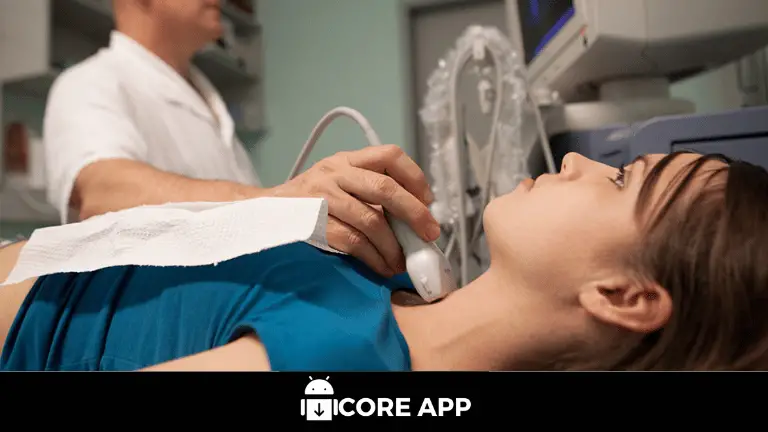How Long Does It Take to Become an Ultrasound Tech? [2024] Pursuing a career in the medical field can be both rewarding and challenging, with numerous paths to explore. One such path that has gained significant attention in recent years is that of an ultrasound technician, also known as a diagnostic medical sonographer. These highly skilled professionals play a crucial role in the healthcare industry, utilizing advanced imaging technology to capture detailed images of the body’s internal structures, aiding in the diagnosis and treatment of various medical conditions.
If you’re considering a career as an ultrasound tech, one of the most pressing questions you might have is, “How long does it take to become an ultrasound tech?” The answer is not as straightforward as you might think, as it depends on several factors, including your educational background, chosen program, and the specific requirements of your state or region.
In this comprehensive guide, we’ll explore the various pathways to becoming an ultrasound tech, the typical duration of each program, and the additional steps involved in obtaining the necessary certifications and licenses. Whether you’re a recent high school graduate or a seasoned professional seeking a career change, this article will provide you with valuable insights to help you make informed decisions about your future in the field of diagnostic medical sonography.
Contents
Understanding the Role of an Ultrasound Tech
Before delving into the specifics of how long it takes to become an ultrasound tech, it’s essential to understand the nature of this profession and the responsibilities it entails. Ultrasound technicians, also referred to as diagnostic medical sonographers, are highly trained healthcare professionals who operate specialized imaging equipment to create visual representations of the body’s internal structures.
These professionals play a vital role in assisting physicians and other healthcare providers in diagnosing and monitoring various medical conditions. Some of the primary responsibilities of an ultrasound tech include:
- Preparing Patients: Ultrasound techs ensure patients are comfortable and informed about the procedure, explaining the process and addressing any concerns or questions they may have.
- Operating Imaging Equipment: They skillfully operate complex ultrasound machines, adjusting settings and positioning the transducer (a handheld device that emits high-frequency sound waves) to capture clear and accurate images.
- Image Acquisition and Analysis: Ultrasound techs must have a keen eye for detail, as they are responsible for acquiring high-quality images and analyzing them for potential abnormalities or areas of concern.
- Maintaining Patient Records: They document patient information, imaging findings, and other relevant data in accordance with established protocols and regulations.
- Collaborating with Healthcare Professionals: Ultrasound techs work closely with physicians, radiologists, and other healthcare professionals, providing them with the necessary imaging data to facilitate accurate diagnoses and treatment plans.
With such a diverse range of responsibilities, it’s crucial for aspiring ultrasound techs to receive comprehensive training and education to ensure they can perform their duties with the highest level of proficiency and professionalism.
Educational Pathways to Becoming an Ultrasound Tech
The journey to becoming an ultrasound tech typically begins with obtaining the necessary educational qualifications. There are several pathways one can take, each with its own duration and requirements. Let’s explore the most common options:
Associate’s Degree Programs
One of the most common routes to becoming an ultrasound tech is through an associate’s degree program in diagnostic medical sonography. These programs typically take two years to complete and are offered by community colleges, technical schools, and some universities.
Associate’s degree programs in diagnostic medical sonography provide students with a well-rounded education that combines classroom instruction with hands-on clinical experiences. The curriculum covers a wide range of topics, including anatomy and physiology, ultrasound physics and instrumentation, patient care, and specialized sonography courses focused on different areas of the body, such as abdominal, obstetric, and vascular sonography.
During the program, students will have the opportunity to gain practical experience through supervised clinical rotations in various healthcare settings, such as hospitals, clinics, and imaging centers. These clinical experiences are invaluable, as they allow students to apply their theoretical knowledge in real-world scenarios and develop the necessary skills for effective patient care and image acquisition.
Upon successful completion of an associate’s degree program, graduates are eligible to sit for the relevant certification exams offered by organizations such as the American Registry for Diagnostic Medical Sonography (ARDMS) or the American Registry of Radiologic Technologists (ARRT).
Bachelor’s Degree Programs
While an associate’s degree is the most common pathway, some aspiring ultrasound techs choose to pursue a bachelor’s degree in diagnostic medical sonography. These programs typically take four years to complete and are offered by universities and select colleges.
Bachelor’s degree programs in diagnostic medical sonography provide a more comprehensive and in-depth education, covering advanced topics in sonography, as well as additional coursework in areas such as healthcare management, research methods, and interdisciplinary studies. These programs often offer concentrations or specializations in specific areas of sonography, such as cardiovascular, musculoskeletal, or pediatric sonography.
In addition to the extensive theoretical knowledge, bachelor’s degree programs also emphasize hands-on training through clinical rotations and practicum experiences. These practical components ensure that students develop the necessary skills for professional practice and are well-prepared for the demands of the healthcare industry.
Graduates of bachelor’s degree programs in diagnostic medical sonography are eligible to sit for the same certification exams as those with associate’s degrees, but they may have a competitive advantage when applying for certain positions or pursuing advanced roles in the field.
Certificate Programs
For individuals who already hold a degree in a related field, such as nursing or radiologic technology, certificate programs in diagnostic medical sonography can provide a more streamlined pathway to becoming an ultrasound tech. These programs typically take between one and two years to complete, depending on the institution and the student’s prior educational background.
Certificate programs in diagnostic medical sonography are designed to provide focused training in the specific skills and knowledge required for ultrasound imaging. The curriculum covers topics such as ultrasound physics, instrumentation, anatomy and pathology, and specialized sonography courses related to various imaging modalities.
While certificate programs may not provide the same breadth of education as associate’s or bachelor’s degree programs, they offer a condensed and intensive learning experience for those who already possess a solid foundation in healthcare or related fields.
Upon completion of a certificate program, graduates are eligible to sit for the relevant certification exams offered by organizations like ARDMS or ARRT, provided they meet the additional prerequisites and requirements set by these credentialing bodies.
On-the-Job Training Programs
In some cases, healthcare facilities or imaging centers may offer on-the-job training programs for individuals interested in becoming ultrasound techs. These programs typically involve a combination of classroom instruction and supervised hands-on training within the healthcare facility.
On-the-job training programs can vary in duration, ranging from several months to over a year, depending on the specific program and the employer’s requirements. These programs are often tailored to the facility’s needs and may focus on specific areas of sonography, such as obstetric or cardiac imaging.
While on-the-job training programs can provide a direct pathway to employment within the facility, it’s important to note that they may not necessarily lead to nationally recognized certifications or licensure. In some cases, individuals who complete these programs may still need to pursue additional education or certification to meet the requirements for professional practice in their state or region.
It’s crucial to carefully research and evaluate the credibility and accreditation status of any on-the-job training program before enrolling, as well as understand the potential limitations or additional steps required for professional advancement.
Certification and Licensure Requirements
In addition to completing an educational program, aspiring ultrasound techs must also obtain the necessary certifications and licenses to practice in their state or region. The certification and licensure requirements can vary depending on the specific jurisdiction, but generally include the following:
Professional Certifications
Most employers and healthcare facilities require ultrasound techs to hold professional certifications from recognized organizations, such as the American Registry for Diagnostic Medical Sonography (ARDMS) or the American Registry of Radiologic Technologists (ARRT).
These organizations offer various certification exams that assess the knowledge and skills required for competent practice in different areas of sonography, such as:
- Abdominal Sonography
- Obstetric and Gynecologic Sonography
- Vascular Sonography
- Cardiac Sonography
- Pediatric Sonography
- Musculoskeletal Sonography
To be eligible for these certification exams, candidates must typically meet specific educational and clinical experience requirements set by the certifying organization. For example, ARDMS requires candidates to complete an accredited educational program and clinical experience in the relevant specialty area before attempting the corresponding certification exam.
Obtaining professional certifications not only demonstrates an individual’s competence and expertise in the field but also enhances their credibility and employability. Many employers and healthcare facilities prefer or require ultrasound techs to hold one or more certifications from these respected organizations.

FAQs
How long does it take to become an ultrasound tech?
The time it takes to become an ultrasound tech can vary. Typically, it takes about 2 years to complete an associate’s degree program or 4 years to complete a bachelor’s degree program in sonography.
What education is required to become an ultrasound tech?
To become an ultrasound tech, you will need to complete a formal education program in sonography. This can be an associate’s or bachelor’s degree program.
Are there any prerequisites for ultrasound tech programs?
Prerequisites for ultrasound tech programs can vary but may include courses in anatomy, physiology, physics, and medical terminology.
Is certification required to become an ultrasound tech?
Certification is not always required to become an ultrasound tech, but many employers prefer to hire certified technologists. Certification can be obtained through organizations such as the American Registry for Diagnostic Medical Sonography (ARDMS).
What is the job outlook for ultrasound techs?
The job outlook for ultrasound techs is strong, with a faster-than-average growth rate projected. This is due to an aging population and the increasing use of ultrasound technology in medical diagnosis.
